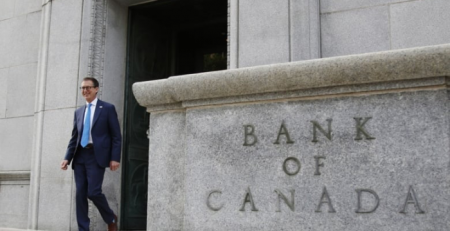COVID-19: Use CERB aid extension to plan for tax, debt obligations, says credit counsellor
[Vancouver Sun – August 29, 2020]
The transition from CERB to EI will squeeze down the incomes of many British Columbians, but not planning for debts and taxes will come with consequences, says the Credit Counselling Society’s Scott Hannah
British Columbians who are relying on the Canada Emergency Response Benefit face some tough decisions when the program ends Sept. 27 that credit counsellors worry they aren’t preparing for.
The concerns start with not accounting for future tax liabilities that will be owing on CERB, not planning for debt obligations that will eventually come due and figuring out their income levels for when CERB is transitioned into the regular employment insurance.
Canadians won four weeks of grace when newly appointed Finance Minister Chrystia Freeland extended CERB while details of a revamped employment insurance program are worked out, but should “use this very carefully, because it wasn’t expected,” said Scott Hannah, CEO of the Credit Counselling Society.
While people may be relieved, Hannah said the move has a double edge since “it just put out another month where people haven’t had to address their financial circumstances.”
Some 1.15 million British Columbians applied for CERB during the pandemic-induced shutdown of the economy, according to Service Canada statistics.
And while employment has bounced considerably with the economy gaining back about 60 per cent of the 400,000 jobs lost in March and April, according to Statistics Canada’s July Labour Force Survey, younger workers continue to bear the brunt of an uneven recovery.
Workers in the under-25 demographic regained 7,200 jobs in July compared with June, but unemployment in that age group remained high at 24 per cent, compared with 11 per cent in the population as a whole.
And British Columbians under the age 35 were the biggest group of CERB applicants at 484,230, 42 per cent of the total, versus 421,300 between the ages of 45-44, which amounts to 33 per cent.
Hannah said government has indicated “it’s going to be a fairly easy transition for Canadians to go from CERB to EI, but they should understand what they qualify for now, not wait until the last minute.”
For those eligible for EI, minimum payments will be set at $400 per week, with relaxed rules for qualification.
And government is establishing the Canada Recovery Benefit, a minimum of $400 per week for up to 26 weeks for those who don’t qualify for EI such as the self-employed who cannot work or those who have seen their income reduced due to COVID-19.
It will be less than CERB, but Hannah said people should find out how much they are eligible for “and that gives you an extra month to plan for it. Some people are having to make tough decisions.”
And Hannah advises consumers to use that additional grace period for CERB, and hopefully some of the cash, to plan for the taxes that will come along with adding that benefit to whatever income they may have already earned in 2020.
“I do recognize that’s tough for a lot of Canadians who have seen their incomes drop substantially,” Hannah said, “but it’s not going to improve over the next six months.”
And if consumers can’t plan and set aside money for those taxes, they will wind up with interest accumulating on any amounts owing.
“(Government is) a lot tougher than typical collectors,” Hannah said. “They have all the tools in their toolbox and know how to use them.”
Hannah also anticipates his counsellors at his debt-settlement organization will be getting busier in the coming months. They have found that creditors have generally been cooperative about giving consumers short-term relief with their debts.
At some point, however, “creditors will pursue their normal collection activities again.”
“So consumers will be in for, I believe, a bit of a rocky road, if they don’t get their financial house in order today,” Hannah said.











